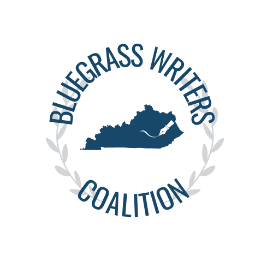Publishing Options for Authors
You’ve written a book. Congratulations! Now it’s time for your literary baby to make its debut. Today’s authors have a variety of choices for sharing their work with the reading public. Consider these options as you decide which avenue is right for you.
Traditional publishing. Large publishing companies such as Random House, Hachette and others employ professional editors, artists, designers, marketing experts, and sales staff to take your work from manuscript to a polished, consumer-ready book. In the traditional publishing model, the author grants the publisher the right to produce and distribute their book. The author is paid a sum of money up front (called an advance,) and a percentage of sales (royalties) when the book is made available to the public. There is no up-front cost to the author. One benefit of this publishing route is the widespread availability of the book; these publishers have relationships with physical stores, libraries, and international markets so their books enjoy the widest possible exposure. Additionally, these books are often reviewed in major outlets like New York Times, Library Journal and Publisher’s Weekly, which increases visibility. On the downside, the author forfeits a certain amount of control over titling, formatting, and cover design. Production time can be lengthy. Books typically take 12-18 months from contract to release. Plus, traditional publishing is highly competitive and entirely market-driven, so books that target a niche audience are less likely to be accepted. Finally, most large publishers will only consider books offered by a literary agent, so for an unrepresented author, finding a traditional publisher can be difficult.
Small press publishing. With the increase in popularity of online retail outlets like Amazon, and the onset of print-on-demand technology in the early 2000’s, a number of small companies emerged in the publishing industry. These publishers operate under a similar business model as larger publishers, with a few differences. Their staff is much smaller, often consisting of only a handful or even one person. They typically pay a much smaller advance, or no advance at all. While they do make eBooks available online, they may not be able to place printed books in physical stores and libraries, and they may not provide marketing support. However, authors have more input over physical aspects such as titling and cover design. The royalty percentages are usually higher than those offered by large publishers, and the production time is shorter. Some (though not all) small press publishers may charge a fee or require the purchase of a number of books.*
Indie publishing. An increasing number of authors today choose to produce their books on their own using self-publishing platforms like Amazon’s KDP or Ingram Spark. In this model, the author is responsible for every aspect of the publishing and sales processes: editing, interior and exterior formatting, illustrations, cover design, printing, distribution, marketing, etc. Books can easily be made available through online outlets and can be produced in a matter of weeks or even days. The author receives all the profits from book sales and retains full creative control over their book. Up-front costs such as hiring an editor, illustrator, graphic designer, etc., are entirely within the author’s control. Downsides include the potential to release a less polished product due to a lack of input by trained professionals, and a heavy reliance on author-driven sales due to the lack of widescale placement in physical bookstores or libraries. Sales are often smaller than those for books released by large publishing companies, and are entirely dependent on the author’s knowledge of marketing and sales techniques. Also, bookstores may be hesitant to order physical copies, because many distributors from which they purchase books will not allow returns of unsold copies published in this model.
Hybrid publishing. Recently a number of publishing companies (Morgan James Publishing, Greenleaf Book Group, etc.) have emerged that combine the traditional and indie publishing models. These publishers employ professional editors, designers, sales and marketing staff and do place books in both online and physical outlets. In return for the professional services, they require authors to pay an up-front fee and/or purchase a number of books. They may also require the author to sign a contract giving them exclusive distribution or other rights. The royalty percentage is typically higher than those offered by traditional publishers. *
In conclusion, today’s publishing industry offers many options for authors. By carefully considering factors such as creative control, financial investment, and retail exposure, your book will find its way into the hands of the reading public.
*Authors are advised to be very cautious before entering into an arrangement that requires book purchases or payment for services.
——————

Ginny Logan serves as president of Bluegrass Writers Coalition. Writing as Virginia Smith, she has written over fifty books with sales exceeding 2 million copies worldwide. www.VirginiaSmith.org
